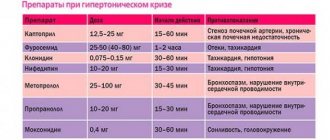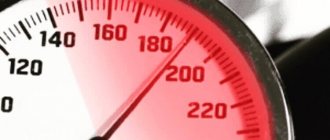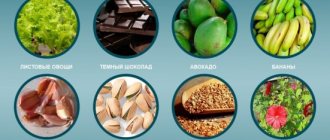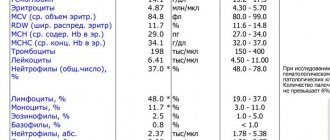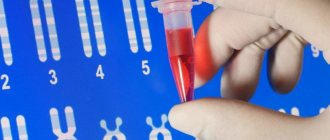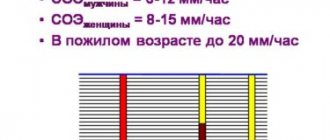The blood pressure value is expressed in two numbers. The first indicator is systolic pressure, which is popularly called upper, the second is diastolic, or lower. Systolic shows the level of blood pressure when the heart contracts, diastolic - at the moment of its relaxation.
Normally, blood pressure should not exceed 120/80 mm Hg. pillar If it is between 120/80 and 139/89, we are talking about prehypertension, higher values indicate hypertension, or hypertension. Most often, with elevated blood pressure, both indicators exceed the norm. A more rare occurrence is high lower blood pressure with normal upper blood pressure.
What is diastolic pressure?
It means the degree of blood pressure on the vascular walls at the moment of relaxation of the heart muscle, when there is little blood in it. This indicator gives an idea of the tone of the vascular walls, since diastolic pressure is a reaction to their resistance. Lower blood pressure is considered normal if it is below 80 mm Hg. pillar
A sustained increase in diastolic blood pressure indicates a high resistance of the vascular walls, which means their constant spasm. If the vessels are always narrowed, blood flows poorly to the organs and tissues and they do not receive enough oxygen and nutrients. This leads to disruption of organ function.
There are three stages of isolated increase in lower blood pressure:
- 1st – 90-100 mm Hg. Art.;
- 2nd – 100-110;
- 3rd - above 110.
Prevention measures
Measures to prevent hypertension include:
- regular physical activity;
- giving up alcohol and smoking;
- balanced diet.
- dosed consumption of table salt (no more than 5 g per day).
Also, do not forget to regularly measure your blood pressure with a tonometer, which will allow you to notice its increase in time and seek medical help.
Causes of increased diastolic pressure
Hypertension can be primary, that is, it is unknown why blood pressure has risen, and secondary (symptomatic), if it develops against the background of other diseases. Why does diastolic blood pressure increase?
Causes of isolated increase in lower blood pressure
If lower pressure is elevated for a long time, the reasons may be the following:
- Kidney disorders. The kidneys are one of the main organs involved in regulating blood pressure. The cause of increased diastolic blood pressure may be a narrowing of the renal artery, in which the volume of blood entering the kidneys decreases. An increase in blood pressure with a predominant increase in diastolic is observed in chronic glomerulonephritis, congenital anomalies in the structure of the renal vessels, and renal failure.
- Thyroid diseases.
- Cardiac pathologies: heart defects, tumor processes.
- Diseases of the adrenal glands and pituitary gland.
- Spinal hernias.
- Changes in hormonal balance, for example in women during pregnancy.
The kidneys are directly involved in regulating blood pressure. If their work is disrupted, the pressure deviates from the norm
Reasons for increasing lower blood pressure simultaneously with upper blood pressure
- Increased lower pressure is usually observed in essential hypertension, which is also called essential hypertension (HD) or primary hypertension. The reasons for the increase in pressure in this case have not been established and it is in no way related to other pathologies. Hypertension with high diastolic pressure is more often observed in young people and can progress and take a malignant course. With this disease there is a high probability of developing complications, and the higher the pressure, the greater the risk.
- Lower pressure can change throughout the day in healthy people, for example, it can increase during emotional or physical stress. As a rule, it quickly decreases on its own, and this is considered normal.
- Excessive alcohol consumption.
Psychological reasons
This type of internal reasons includes:
- neuroses of various origins;
- emotional instability;
- severe mental stress;
- stressful situations;
- depressive states;
- psychological trauma;
- emotional shock (shock).
Psychological problems are the most important factor leading to hypertension. What causes a person’s blood pressure to increase in this case? Tension in the nervous system, which is accompanied by strong emotions, hidden experiences, and constant stress, leads to the production of adrenaline. This hormone constricts blood vessels and increases blood pressure. If a person is constantly in a state of psychological conflict with himself or the world around him, hypertension becomes his faithful companion.
The collective image of a hypertensive person could contain the following features:
- He is too concerned with other people's opinions of himself.
- This is usually a workaholic.
- Likes to control everyone and everything, including himself.
- Unconfident.
- Doesn't trust anyone.
- Secretive, reserved, keeps everything to himself.
- Lives with a feeling of guilt.
- He is characterized by anger, touchiness, anger, irritability.
- Constantly strives to be ahead, craves self-affirmation, and is overly demanding of himself.
- Constantly waiting for a threat, a catch, always on the alert, in tense anticipation of trouble.
This is only an approximate portrait of a person suffering from high blood pressure; he may only have some of the listed traits. The main thing is that he urgently needs the help of a psychotherapist.
Immediate (direct) causes of increased blood pressure:
- Hardening of blood vessels, loss of elasticity of their walls.
- Increased viscosity (thickness) of blood.
- Thinning, fragility of blood vessels.
- Narrowing of the lumen of the vascular walls. It can be caused by the body's reaction to any irritants. Or the vessels may be narrowed in a calm state due to the presence of deposits of calcium salts, cholesterol plaques, and blood clots.
- Increasing blood volume.
All these reasons can be caused by one or more of the factors described above.
Danger
An increase in lower pressure often has no symptoms, and a person does not even know about it. They may be discovered during a routine examination or when visiting a doctor for other reasons. There is a misconception that only elevated upper blood pressure threatens health and life, but in fact, an increase in lower blood pressure is no less dangerous. The heart in this state is constantly tense and practically does not relax. The blood flow in it is disrupted, the disease progresses, structural changes begin to occur, which ultimately become irreversible.
It is important to know that high lower blood pressure cannot be ignored. It leads to organ dysfunction and, without treatment, can result in death within six months. There is a high risk of developing thrombosis, heart attacks, and strokes.
What symptoms may indicate hypertension?
As a rule, the disease is asymptomatic for a long time. In some cases, increased pressure is accompanied by:
- frequent heart rate;
- headaches, dizziness;
- weakness, fatigue;
- redness of the facial skin;
- increased sweating;
- blurred vision, ringing in the ears.
However, such symptoms are not specific to hypertension and may be signs of other diseases or fatigue. Therefore, pathology can be detected at an early stage only by regularly measuring blood pressure.
Treatment
Treatment should be carried out only under the supervision of a doctor. You should not do this yourself. First of all, you need to find out the reasons for the increase in lower blood pressure. If hypertension is secondary, treatment of the primary pathology is required. In any case, it is necessary to reduce the pressure, for which a set of measures is used, including:
- proper nutrition;
- loss of excess weight (if any);
- compliance with the daily routine (work and rest);
- physical activity (sports, physical therapy, walking);
- staying in the fresh air;
- taking medications;
- folk remedies.
Diet
Proper nutrition is of great importance for normalizing blood pressure. The diet should consist of:
- Fresh vegetables, herbs, berries and fruits.
- Lean meats.
- Dairy and fermented milk products.
- Lean fish.
- Bread made from wholemeal flour.
- Replace sugar with honey.
The following foods should be limited or avoided:
- salty (salt retains fluid in the body, which increases blood pressure);
- fatty and fried;
- sweet and buttery;
- alcoholic drinks.
All people with hypertension should limit salt in their diet
Medicines
You should only take medications prescribed by your doctor. Typically, medications from several groups are used to normalize blood pressure, including:
- Beta blockers are drugs that reduce the heart's need for oxygen, regulate its functioning and lower blood pressure.
- Calcium antagonists - increase the activity of renin, which is poorly produced in renal pathologies. Prescribed in severe stages of hypertension, for example, in renal failure, after heart attacks to prevent death.
- Diuretics (diuretics).
Traditional methods
Traditional medicine offers many remedies to lower diastolic blood pressure, but they should only be taken with the permission of a doctor. As a rule, these are decoctions and infusions that reduce nervous tension, help you relax and calm down.
Hawthorn
An infusion of the fruits of this plant relaxes vascular walls and relieves nervous excitability. A glass of water will require 20 grams of dry fruits. Boil for 30 minutes, then strain and add water to the original volume. Take a tablespoon three times a day.
Traditional medicine suggests treating hypertension with a decoction of hawthorn fruits
Motherwort
The infusion increases the strength of heart contractions, calms the nerves, and eliminates overexcitation. Two tables. Pour a spoonful of herbs into a glass of hot water and leave for an hour. Drink two per table. spoons every day before bed.
Diuretic collection
Pour a mixture of herbs (a tablespoon each of St. John's wort, oregano, motherwort and sage) with boiling water (two glasses) and leave for half an hour. Drink half a glass a day for a month.
Valerian
It has a relaxing effect on the central nervous system and helps lower blood pressure.
Peony
Pharmacy tincture from herbs and peony roots eliminates muscle spasms and has a calming effect.
Cedar cones
Tincture of pine cones helps lower blood pressure. To prepare, you need to take three whole cones, put them in a glass jar and fill them with vodka (1/2 liter), add ten pieces of sugar, a tablespoon of valerian tincture purchased at the pharmacy and leave for 10 days in a dark place. Strain and drink a tablespoon before bed. You can fill the cones two more times.
Beet
Freshly squeezed beet juice strengthens vascular walls and is used to lower blood pressure. You need to take two teaspoons of juice daily half an hour before meals.
How is the disease diagnosed?
To diagnose arterial hypertension, a doctor needs to take several blood pressure measurements at different times of the day. If necessary, a specialist can prescribe ABPM - an instrumental study in which blood pressure is monitored throughout the day using a special device.
Differential diagnosis of hypertension occurs as follows:
- An examination of organs whose pathologies could cause increased blood pressure is performed. For example, the examination may include an ECG, ultrasound of the kidneys, and fundus examination.
- If secondary hypertension is excluded and a specific cause for the increase in blood pressure is not found, then a diagnosis of hypertension is made.
Lower pressure 90 - is this normal?
Every person should have a blood pressure monitor in their first aid kit. If there is no one in the family who could manually inflate the cuff with a bulb and determine the pressure parameters by the movement of the arrow, you can buy an automatic device. It is not much more expensive, and in addition to pressure, it also counts the pulse and can determine signs of arrhythmia. Feeling unwell for no apparent reason should be a reason to measure your blood pressure.
The optimal indicators are considered to be a pair of systolic and diastolic pressures of 120/70 Hg, but even if these numbers rise to 130/80 Hg, this will be considered normal. Values of 140/90 Hg and above are considered elevated. With these values, the doctor can already diagnose arterial hypertension and prescribe a course of treatment.
A lower pressure of 90 units indicates the onset of hypertension. Such values can also appear at a young age, so not only older people need to monitor their blood pressure. Young people have a higher tendency to identify chronic pathologies, which are often accompanied by associated complications.
